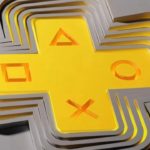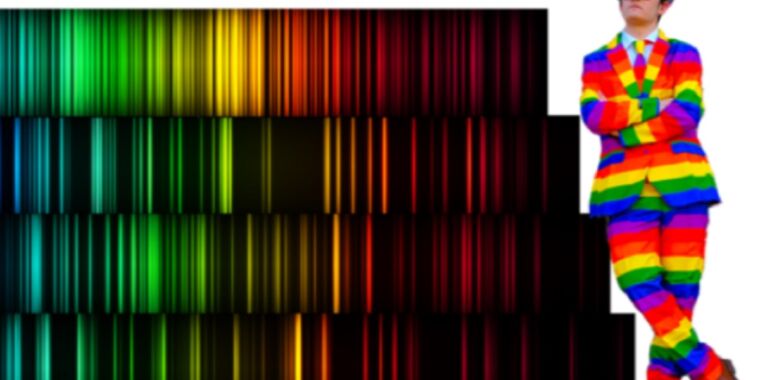W. Walker Smith en Alan Parker
We kennen allemaal de elementen van het periodiek systeem, maar heb je je ooit afgevraagd welk element bijvoorbeeld waterstof of zink zou kunnen zijn? stem Houdt van? W. Walker Smith, nu een afgestudeerde student aan de Universiteit van Indiana, heeft zijn dubbele passies in scheikunde en muziek gecombineerd om wat hij noemt een nieuw audiovisueel hulpmiddel te creëren voor het communiceren van concepten van chemische spectroscopie.
Smith verstrekte zijn gegevens ultrasoonapparaat Het project – dat in wezen de zichtbare spectra van de elementen van het periodiek systeem omzet in geluid – is deze week op de bijeenkomst van de American Chemical Society in Indianapolis, Indiana. Smith liet tijdens zijn show “Sound of Molecules” zelfs geluidsfragmenten zien van sommige elementen, samen met “structuren” waarin grotere deeltjes zijn verwerkt.
Als een student, “I [earned] Duale opleiding in muziekcompositie en scheikunde, dus ik was altijd op zoek naar een manier om mijn scheikundeonderzoek om te zetten in muziek,” Smith zei tijdens een persbriefing. “Uiteindelijk stuitte ik op de visuele spectra van de elementen en was overweldigd door hoe mooi en verschillend ze er allemaal uitzagen. Het leek me heel tof om die visuele spectra, die prachtige beelden, om te zetten in geluid.”
Hoe zien de artikelen eruit?
Gegevenssonicatie is geen nieuw concept. In 2018 veranderden wetenschappers bijvoorbeeld een NASA-afbeelding van de Mars Opportunity-rover in 5000j Zonsopgang op Mars in muziek. de deeltjesfysica gegevens Gebruikt om het Higgs-deeltje te ontdekken, de echo’s van een zwart gat terwijl het een ster verslond, en magnetometermetingen van de Voyager-missie zijn ook in muziek omgezet. Enkele jaren geleden heeft A.J[[” embedded=”” url=”” link=”” data-uri=”d71e3e53769b46aa75512f689b034f33″>project called LHCSound built a library of the “sounds” of a top quark jet and the Higgs boson, among others. The project hoped to develop sonification as a technique for analyzing the data from particle collisions so that physicists could “detect” subatomic particles by ear.
Markus Buehler’s MIT lab famously mapped the molecular structure of proteins in spider silk threads onto musical theory to produce the “sound” of silk in hopes of establishing a radical new way to create designer proteins. The hierarchical elements of music composition (pitch, range, dynamics, tempo) are analogous to the hierarchical elements of protein structure. The lab even devised a way for humans to “enter” a 3D spider web and explore its structure both visually and aurally via a virtual reality setup. The ultimate aim is to learn to create similar synthetic spiderwebs and other structures that mimic the spider’s process.
Several years later, Buehler’s lab came up with an even more advanced system of making music out of a protein structure by computing the unique fingerprints of all the different secondary structures of proteins to make them audible via transposition—and then converting it back to create novel proteins never before seen in nature. The team also developed a free Android app called the Amino Acid Synthesizer so users could create their own protein “compositions” from the sounds of amino acids.
So Smith is in good company with his interactive periodic table project. All the elements release distinct wavelengths of light, depending on their electron energy levels, when stimulated by electricity or heat, and those chemical “fingerprints” make up the visible spectra at the heart of chemical spectroscopy. Smith translated those different frequencies of light into different pitches or musical notes using an instrument called the Light Soundinator 3000, scaling down those frequencies to be within the range of human hearing. He professed amazement at the sheer variety of sounds.
“Red light has the lowest frequency in the visible range, so it sounds like a lower musical pitch than violet,” said Smith, demonstrating on a toy color-coded xylophone. “If we move from red all the way up to violet, the frequency of the light keeps getting higher, and so does the frequency of the sound. Violet is almost double the frequency of red light, so it actually sounds close to a musical octave.” And while simpler spectra like hydrogen and helium, which only have a few lines in their spectra, sound like “vaguely musical” chords, elements with more complex spectra consisting of thousands of lines are dense and noisy, often sounding like “a cheesy horror movie effect,” according to Smith.
His favorites: helium and zinc. “If you listen to the frequencies [of helium] Een voor een in plaats van allemaal tegelijk, zei Smith, kun je een interessant schaalpatroon krijgen dat ik heb gebruikt om verschillende composities te componeren, waaronder ‘Helium Dance Party’. Wat betreft zink, de eerste rij overgangsmetalen raspen klinkt erg complex en dicht. Maar Zink klinkt om welke reden dan ook, ondanks zijn overvloed aan frequenties, als een engelachtige zanger die vibrato zingt. “
Smith werkt momenteel samen met het Wonder Lab Museum in Bloomington, Indiana, aan de ontwikkeling van een museumexpositie waarmee bezoekers kunnen communiceren met het periodiek systeem, naar klaagzangen kunnen luisteren en hun eigen muzikale composities kunnen maken van de verschillende geluiden. Het belangrijkste dat ik wil [convey] is dat wetenschap en kunst toch niet zo verschillend zijn. “Door ze te combineren kunnen nieuwe onderzoeksvragen ontstaan, maar ook nieuwe manieren om te communiceren en een groter publiek te bereiken.”

“Amateur-organisator. Wannabe-bierevangelist. Algemene webfan. Gecertificeerde internetninja. Fanatieke lezer.”










More Stories
Wetenschappers bereiden zich voor op zonnestormen op Mars
Het hoogste observatorium ter wereld, hoog gelegen in de Andes in Chili, is eindelijk geopend
De robot beheerst het terrein via dierachtige loopovergangen